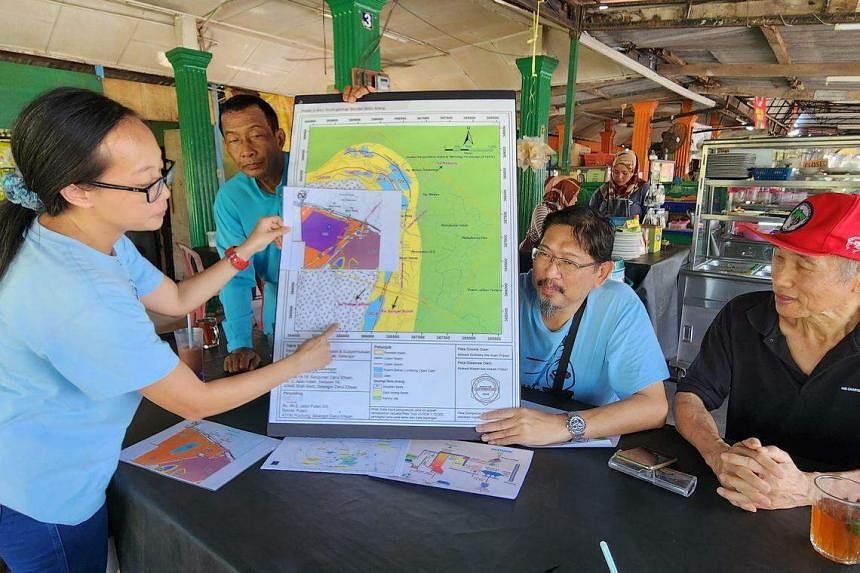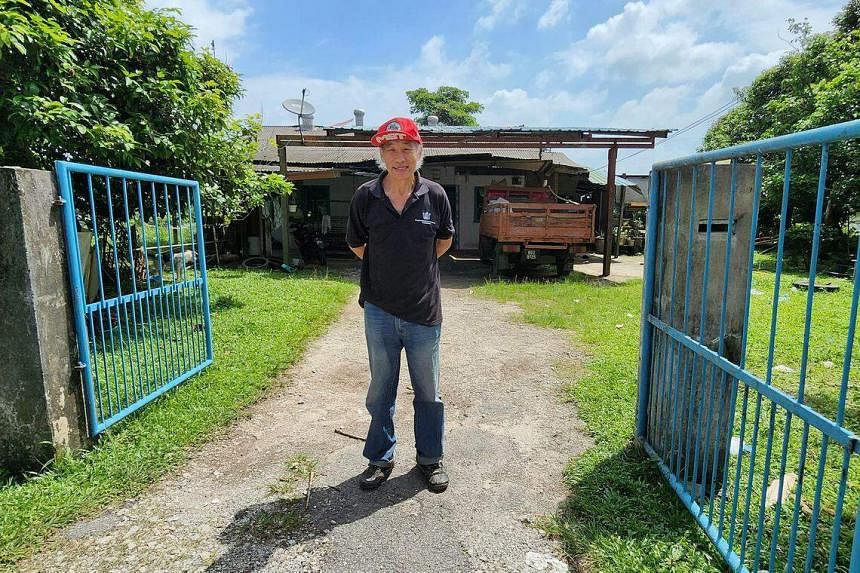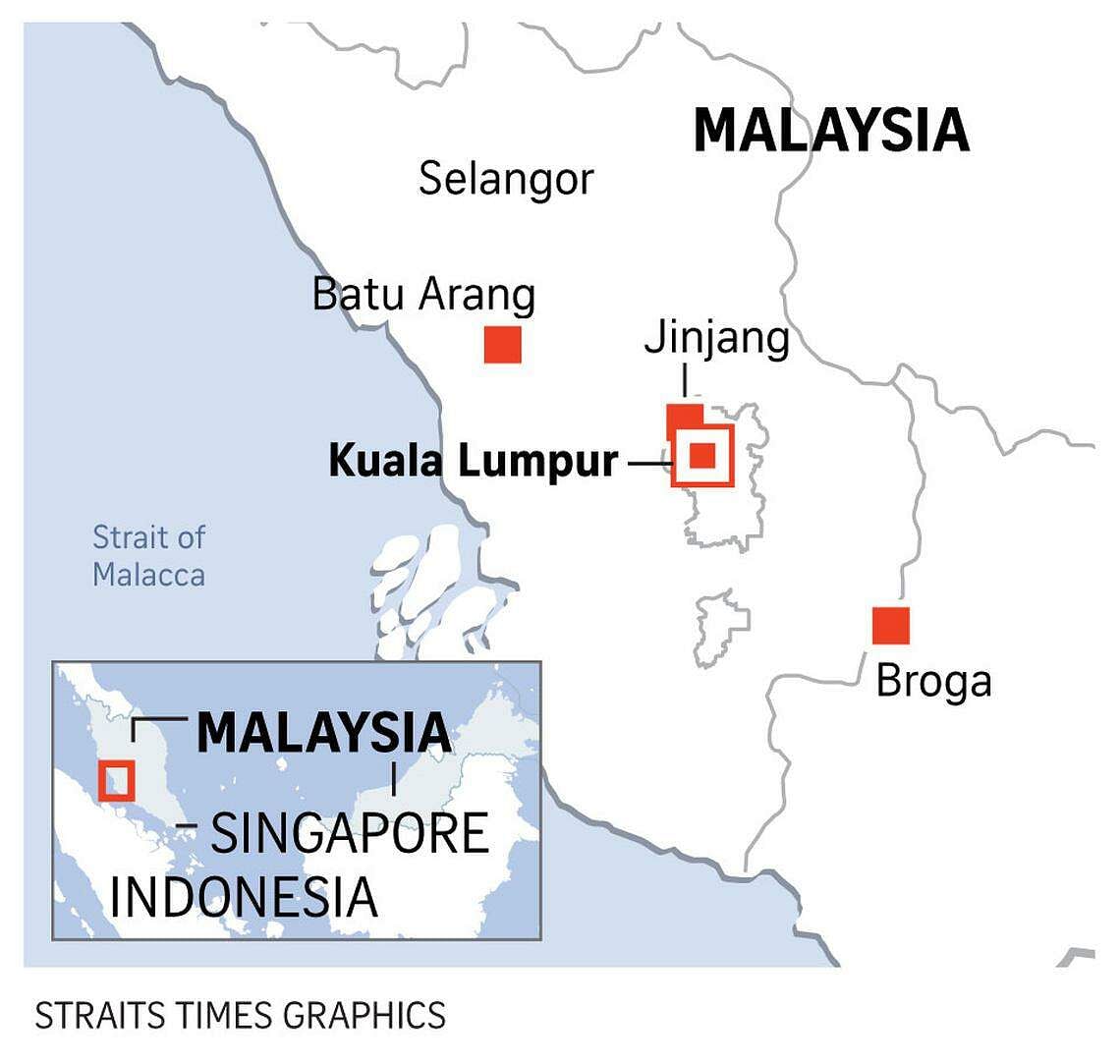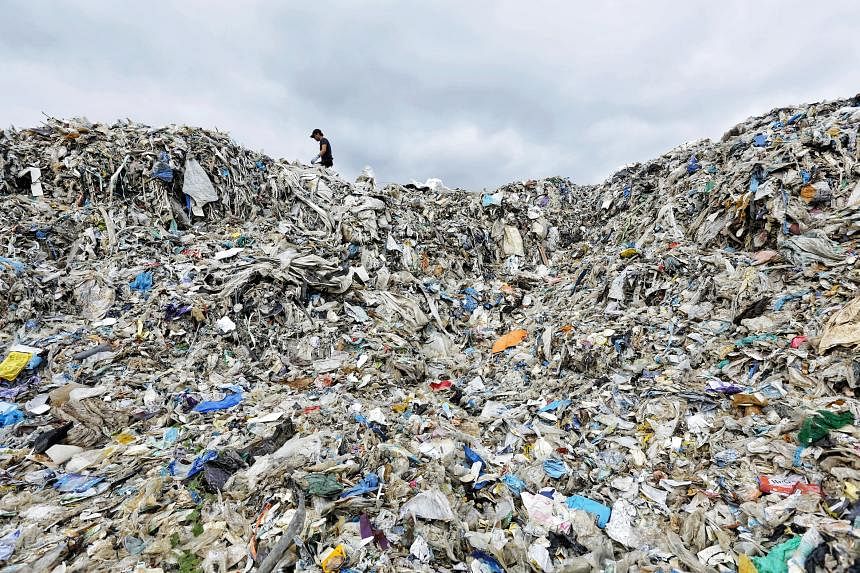BATU ARANG - Residents of a former coal-mining town in Malaysia’s Selangor state are up in arms over plans to build a RM4.5 billion (S$1.3 billion) incinerator in their district, fearing health hazards from the waste plant’s emissions.
The planned incinerator in Batu Arang, some 50km north-west of Kuala Lumpur, will have the capacity to burn 2,400 tonnes of waste daily.
Once completed, the plant will convert to energy and ash 2,400 tonnes of waste produced daily in six local councils in Selangor.
Most rubbish in Malaysia is buried, with the country expected to run out of landfills by 2050.
Klang Valley, Malaysia’s most densely populated area, which includes Kuala Lumpur and the Selangor districts around the capital, produces some 10,000 tonnes of waste per day.
The strong objections of local residents against an incinerator in the area are not new.
The government has in the last two decades abandoned plans to build a similar plant in Broga in south Selangor and in Jinjang in north Kuala Lumpur.
Residents of Batu Arang said the incinerator may jeopardise their health and safety through the emission of poisonous fumes such as cancer-causing dioxins close to homes, schools, mosques and temples located within some 700m to 2km of the proposed waste plant.
“People are angry and concerned about the health and environmental impact,” Ms Pauline Puah, whose child attends a school just 1km away from the proposed site, told The Straits Times.
Ms Esther Woo, spokeswoman for Jaringan Rawang Tolak Incinerator (JRTI), a coalition of resident associations that oppose the move, said she is worried about the health of her children who attend a school nearby.
“There could be health issues for children who inhale the unclean air from Monday to Friday during school hours,” she said.
The group is also afraid that traces of dioxins will end up in the rivers close by.
“We are not against technology, but relocate it to another place,” said Mr Raja Amir Hamzah, another JRTI activist.

Selangor Menteri Besar Amirudin Shari said on Jan 22 that the waste-to-energy (WTE) technology to be used will not harm the environment.
“This technology is not from the 70s or 80s. The WTE technology is used in developed countries and does not have a negative impact on the environment,” he said.
WTE plants use waste to generate electricity.
The plant is aimed at reducing dependence on landfill disposal sites, which will ultimately have a “detrimental impact on the community”, he added.
The locals say the proposed incinerator site is also on top of a former coal mine, with tunnels that may still contain methane, a combustible gas. They worry that an incinerator operating at high temperatures could raise the risk of an explosion or fire.
“Geologically, it is not suitable for an incinerator,” said Mr Karl Ngo of the Batu Arang Anti-incinerator pro-tem committee.
Mr Ngo, a retiree whose house is just 1km from the planned site, said his compound had previously caught fire due to the coal mine underneath.
“We are also very concerned about the air and water pollution from the incinerator,” he said.

Residents do not want the narrow roads of the sleepy town to become congested with dozens of rubbish trucks going in and out.
They say the heritage status of the 100-year-old town will also be impacted.
Parti Keadilan Rakyat MP William Leong urged the state government in a Facebook video on Jan 24 to move the plant to a different location.
“I urge the Selangor Menteri Besar... to move the incinerator to a more suitable site. I ask all residents of Batu Arang... to strongly protest against it,” he said.
However, time is running out. Several agencies and environmental activists have warned that Malaysia will have no space for rubbish by 2050 if nothing is done to reduce waste.
Every day, garbage trucks in Malaysia dump some 39,000 tonnes of solid waste at 165 landfills around the country, equivalent to about 1.17kg per person, according to the Solid Waste Management and Public Cleansing Corporation (SWCorp).
Malaysia’s recycling rate was 35.38 per cent as at 2023, and the government aims to hit 40 per cent by 2025.
“The construction of WTE plants, or incinerators that generate electricity, is expected to help manage solid waste by reducing reliance on landfills, in addition to generating power,” SWCorp chief executive officer Ahmad Husaini Abdul Rahman was quoted as saying by The Star news daily on Jan 2.
Professor Agamutu Pariatamby from the Jeffrey Sachs Centre on Sustainable Development, who specialises in solid and hazardous waste management, said incinerators are not harmful if managed properly.
“Japan has more than 1,400 incinerators, and there is no correlation between human health or environmental health and incinerators,” he told ST.
“Generally, the public does not see the harm caused by a landfill since it is not visible, but greenhouse gas from landfills is more damaging than incinerator carbon dioxide. The leachate (hazardous liquid produced in landfill sites) is also most difficult to treat,” he added.

A professional in the waste management industry, who declined to be named, said incinerators are necessary until recycling rates reach above 75 per cent.
“Awareness-building and more convenient ways to recycle and separate at source need to be encouraged, otherwise we will be stuck between polluting our soil and polluting our air. Both are not ideal scenarios,” he said.
But Greenpeace Malaysia’s senior programme manager Thing Siew-Shuen said building incinerators is not a long-term solution.
“The government should fix the underlying problem primarily caused by the single-use or throw-away culture and behaviour,” she said.


